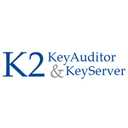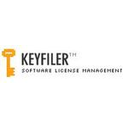License Management software: purchase guide
License Management Software in 2025: Keep Control, Cut Costs, Stay Compliant
What Is License Management Software
License management software helps businesses track, control, and optimize the use of software licenses across their organization. In a world where digital tools are multiplying fast—and costs are rising just as quickly—this kind of software ensures you’re not overspending, underutilizing, or falling out of compliance.
From on-premise installations to SaaS subscriptions, every license carries terms, renewals, usage limits, and legal risks. License management software acts as your watchdog. It monitors usage, flags discrepancies, streamlines renewals, and prevents violations that could result in penalties or inefficiencies.
In 2025, managing software assets isn’t just an IT job—it’s a strategic function that ties directly into cost savings, risk mitigation, and operational agility.
Why License Management Matters Now More Than Ever
Software costs can silently eat into a company’s budget if not properly controlled. Many organizations either pay for tools they don’t use or end up scrambling to renew licenses at the last minute. And with the shift toward subscription-based services and BYOD environments, visibility over usage is harder to maintain.
License management software helps you understand which tools are actually being used, by whom, and how often. This enables better forecasting, smarter procurement, and fewer compliance headaches. It also reduces the risk of shadow IT—those unapproved apps employees install themselves.
For larger enterprises, managing software entitlements across departments and geographies becomes even more complex. The right tool can centralize the entire ecosystem, enforce usage policies, and offer insights that drive better IT decision-making.
How to Choose the Right License Management Software
Start by evaluating your environment. Are you mostly cloud-based or still running legacy systems? Do you need deep integration with Active Directory, procurement platforms, or endpoint management tools? The best license management software will fit your architecture without forcing drastic changes.
Look for automation wherever possible—whether it’s detecting software installations, tracking usage in real time, or sending renewal alerts. Manual tracking through spreadsheets just doesn’t scale.
You’ll also want robust reporting tools. Your finance and legal teams should be able to generate compliance reports, audit trails, and cost analyses without jumping through hoops.
Usability is another factor. Your IT staff should be able to onboard quickly, and your procurement teams should find it easy to validate entitlements or spot opportunities for consolidation. Bonus points if the tool includes role-based access so different departments can manage what’s relevant to them—without touching the rest.
Finally, ask about vendor support and scalability. If your company is growing, your license management platform should grow with it—handling more users, more devices, and more integrations with ease.
Top License Management Software in 2025
| Software |
Key Features |
Pricing |
Trial & Demo |
Best For |
| K2 - KeyAuditor/KeyServer |
Software usage tracking, optimization, compliance enforcement |
Pricing on request |
✅ Free version
✅ Free trial
✅ Free demo |
Enterprises looking for enterprise-grade license compliance control |
| Keyfiler |
License renewal tracking, policy management, compliance reporting |
Pricing on request |
✅ Free version
✅ Free trial
✅ Free demo |
SMBs and IT teams needing streamlined license management workflows |
| Endpoint Management Suite |
Integrated software licensing and endpoint control |
Pricing on request |
✅ Free version
✅ Free trial
✅ Free demo |
Businesses looking to combine device and license management in one platform |
| Nalpeiron Licensing Service |
Automated license activation, anti-piracy protection, flexible license models |
Pricing on request |
✅ Free version
✅ Free trial
✅ Free demo |
Software vendors needing scalable licensing infrastructure and enforcement |
| StarForce ProActive |
Access control, usage analytics, anti-piracy features |
Pricing on request |
✅ Free version
✅ Free trial
✅ Free demo |
Teams needing secure, simple software licensing across applications |
Trends in License Management for 2025
The world of software licensing is evolving—fast. Hybrid work, decentralized teams, and the rise of SaaS have made traditional license tracking outdated. In 2025, modern license management software isn’t just reactive—it’s intelligent, integrated, and aligned with business outcomes.
Smarter AI-driven recommendations are one key trend. Platforms now analyze usage patterns and suggest ways to consolidate or switch plans based on real-time data. Instead of waiting for an audit to tell you what went wrong, you can make proactive decisions and save money.
Another shift is deeper integration with ITSM and procurement platforms. License management isn’t isolated anymore. It’s part of the broader asset lifecycle—from requisition to retirement. Expect to see tighter syncs with tools like ServiceNow, Jira, and ERP systems.
Security is also a growing focus. With cyberattacks on the rise and data compliance becoming stricter, knowing exactly what software is installed, where, and why is critical. License management now overlaps with endpoint detection, access control, and risk analysis.
Finally, expect a move toward flexible licensing models. As companies launch more digital services, they need tools that support usage-based billing, floating licenses, and BYOD policies—all while staying compliant. The future of license management is not about restriction—it’s about smart enablement.
Conclusion
License management software might not be flashy—but it’s foundational. It helps your business avoid overspending, stay compliant, and scale without chaos. Whether you’re managing hundreds of licenses or thousands, having the right system in place turns complexity into control.
In 2025, it’s not enough to track who’s using what. You need insights. You need automation. You need flexibility. That’s what modern license management software delivers—and that’s what keeps your business moving forward without unexpected detours.
When licenses are under control, so is your entire digital ecosystem.









